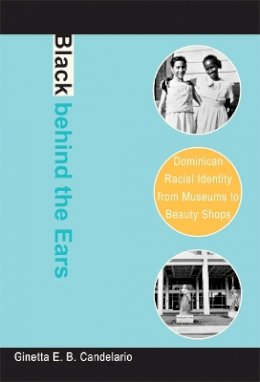11%OFF

Stock image for illustration purposes only - book cover, edition or condition may vary.
Black behind the Ears: Dominican Racial Identity from Museums to Beauty Shops
Ginetta E. B. Candelario
€ 32.99
€ 29.35
FREE Delivery in Ireland
Description for Black behind the Ears: Dominican Racial Identity from Museums to Beauty Shops
Paperback. An innovative historical and ethnographic examination of Dominican identity formation in the Dominican Republic and the United States. Num Pages: 360 pages, 37 b&w photos, 9 tables. BIC Classification: 1KJD; 3JH; 3JJ; JFSL3; JHMP. Category: (P) Professional & Vocational; (U) Tertiary Education (US: College). Dimension: 5830 x 3971 x 21. Weight in Grams: 490.
Black behind the Ears is an innovative historical and ethnographic examination of Dominican identity formation in the Dominican Republic and the United States. For much of the Dominican Republic’s history, the national body has been defined as “not black,” even as black ancestry has been grudgingly acknowledged. Rejecting simplistic explanations, Ginetta E. B. Candelario suggests that it is not a desire for whiteness that guides Dominican identity discourses and displays. Instead, it is an ideal norm of what it means to be both indigenous to the Republic (indios) and “Hispanic.” Both indigeneity and Hispanicity have operated as vehicles for asserting ... Read more
Black behind the Ears is an innovative historical and ethnographic examination of Dominican identity formation in the Dominican Republic and the United States. For much of the Dominican Republic’s history, the national body has been defined as “not black,” even as black ancestry has been grudgingly acknowledged. Rejecting simplistic explanations, Ginetta E. B. Candelario suggests that it is not a desire for whiteness that guides Dominican identity discourses and displays. Instead, it is an ideal norm of what it means to be both indigenous to the Republic (indios) and “Hispanic.” Both indigeneity and Hispanicity have operated as vehicles for asserting ... Read more
Product Details
Format
Paperback
Publication date
2007
Publisher
Duke University Press
Condition
New
Number of Pages
360
Place of Publication
North Carolina, United States
ISBN
9780822340379
SKU
V9780822340379
Shipping Time
Usually ships in 7 to 11 working days
Ref
99-1
About Ginetta E. B. Candelario
Ginetta E. B. Candelario is Associate Professor of Sociology and Latin American and Latina/o Studies at Smith College.
Reviews for Black behind the Ears: Dominican Racial Identity from Museums to Beauty Shops
“Black behind the Ears makes important contributions to our understanding of the Dominican experience. In this book, Ginetta E. B. Candelario shows processes of identity formation among Dominicans in different historical and geographical contexts, and she looks at the nuanced relationship between ethnic and racial identities. In my opinion, this is one of the best books written on the subject ... Read more
